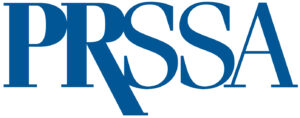Sail Away With Nonprofit Communications
If coordinating a benefit for an organization is difficult, coordinating a benefit in Monaco from the United States is next to impossible. But that is how I have spent recent days at SeaKeepers, the “yachting industry’s charity.”

I started at the organization as an intern and quickly made the transition into a full-time employee as the sole member of the communications department. I was fresh out of college and excited to not spend another summer lifeguarding in the hot Miami sun. Boat show season in South Florida starts up October 1 — I started at SeaKeepers in August. There was much to get done in a short amount of time.
A typical day for a communications coordinator at a nonprofit during boat show season involves donor follow-up, sponsor targeting, newsletter writing, event organization, Web design, creative marketing collateral development, networking events attendance, media relations and print advertisement design.
Here’s what I have learned about working in nonprofit communication:
1. Nonprofits have low budgets and rely on creative ideas.
Designs need to stand out by removing clutter and delivering a quick message to targeted audiences. All images should be eye-catching and be able to stand alone. Be simple, to the point and concise.
I use creative marketing strategies such as calling for a photo contest from constituents to supply us with photos for the future. I also work to secure as much free print ad space as possible, usually through boat show promotional program cards, fishing tournament programs, community bulletins, event calendars and media partners like Yachts International magazine.
2. Social media is your friend; know it well.
In my experience, there is no better way to get your organization’s name out there than with free networking. Make sure that your organization’s website is linked to your social media pages, create a YouTube channel and check your accounts daily. Most importantly, know which sites your constituents frequently use. Social media is a great way to provide your constituents with quick updates and industry news.
3. Know your audiences.
Know what they like, what they care about, where they are from, how much they donate and why they want to be a part of your organization. Most likely, you will not be able to conduct professional research studies, so use already-published studies and identify trends for metrics such as donations, click rates, social media responses and event feedback.
Some key lessons to learn if you want to go into nonprofit communications:
• Know how to make a dime stretch.
• Trust your co-workers; lean on them and let them lean on you.
• Offer to take on several projects so you can build your portfolio.
• Believe in the organization!
What experiences have you had in nonprofit public relations? How do the tasks of professionals in nonprofit settings compare to those in for-profit organizations?
Jen Mangham is an energetic addition to the SeaKeepers communications team. Mangham is a PRSA member and a graduate of Florida State University. Mangham specializes in social media marketing, event production and media relations.

Thank you so much for the tips, Jen!
I interned for a hospital to promote their trauma program and I’d have to say the money and resources that were available were very limited. I just got back from a community service trip in Wilmington, North Carolina and noticed that the organization I volunteered for spends very little time promoting themselves because they don’t have enough time to.
The nonprofit organizations I have been familiar with seem to spend little time on public relations due to the tight resources they have. In comparison to your article, I have also experienced nonprofit organizations reliant on creative ideas.
Nonprofits seem more flexible and open to new ideas, compared to corporate public relations. Would you agree?